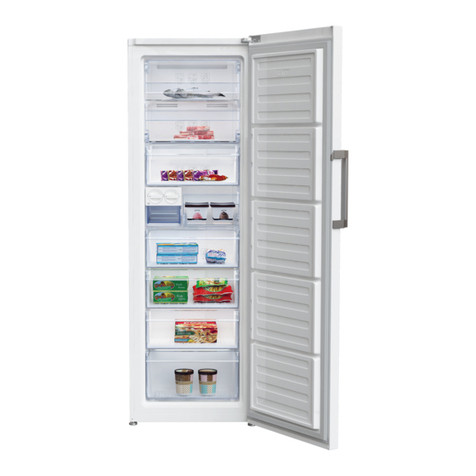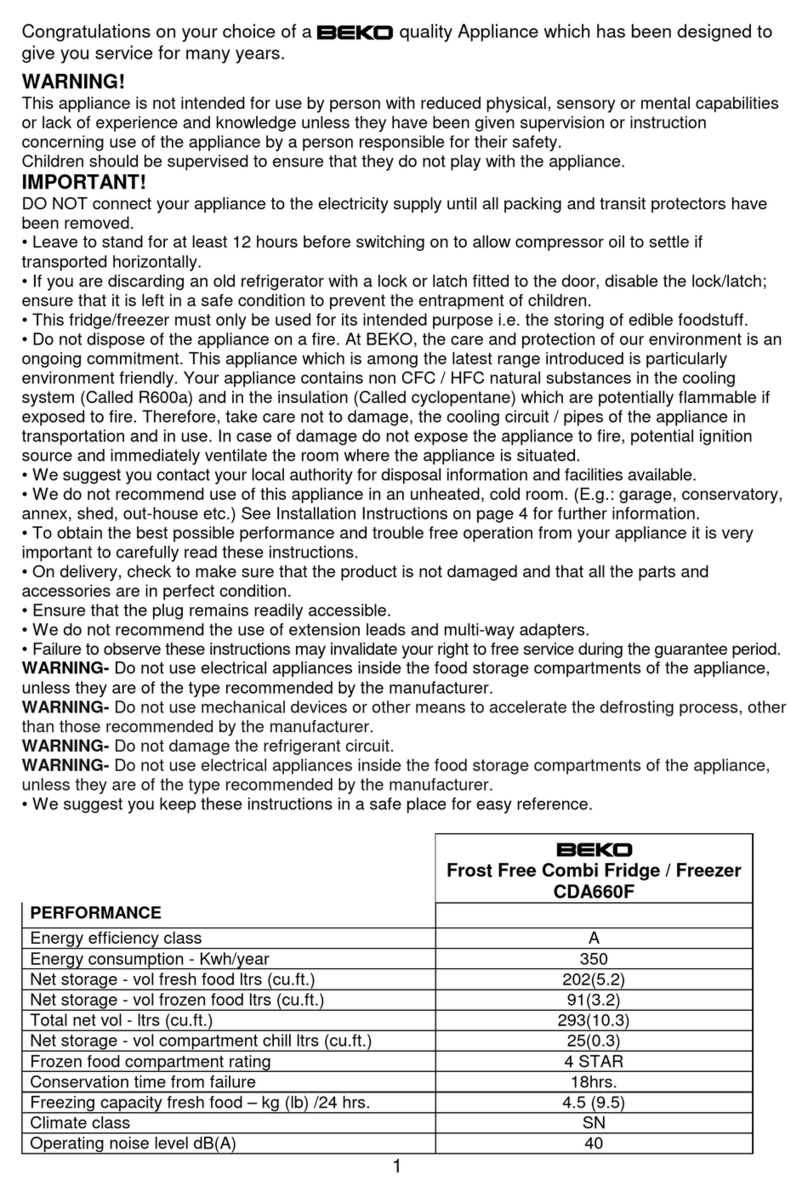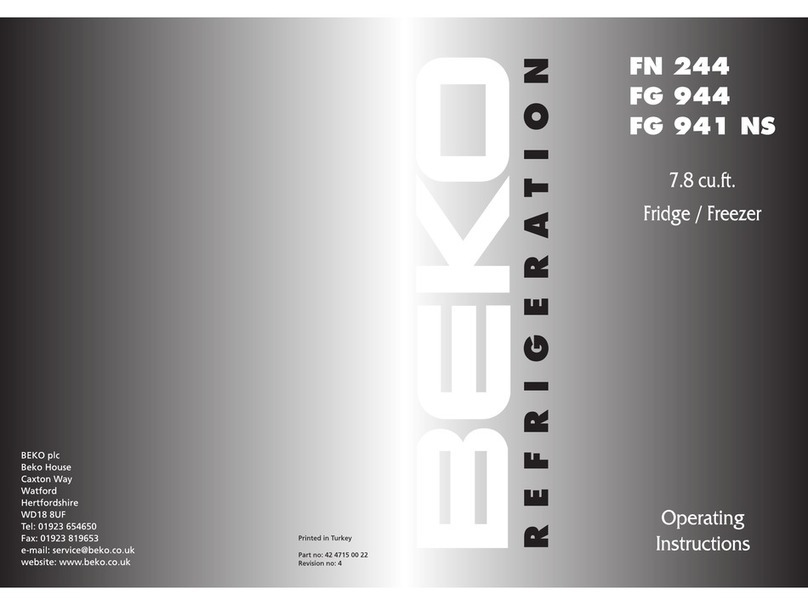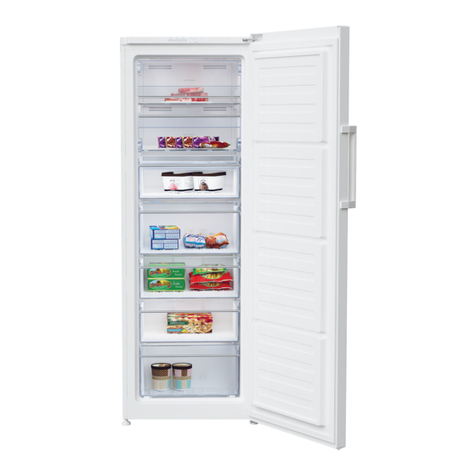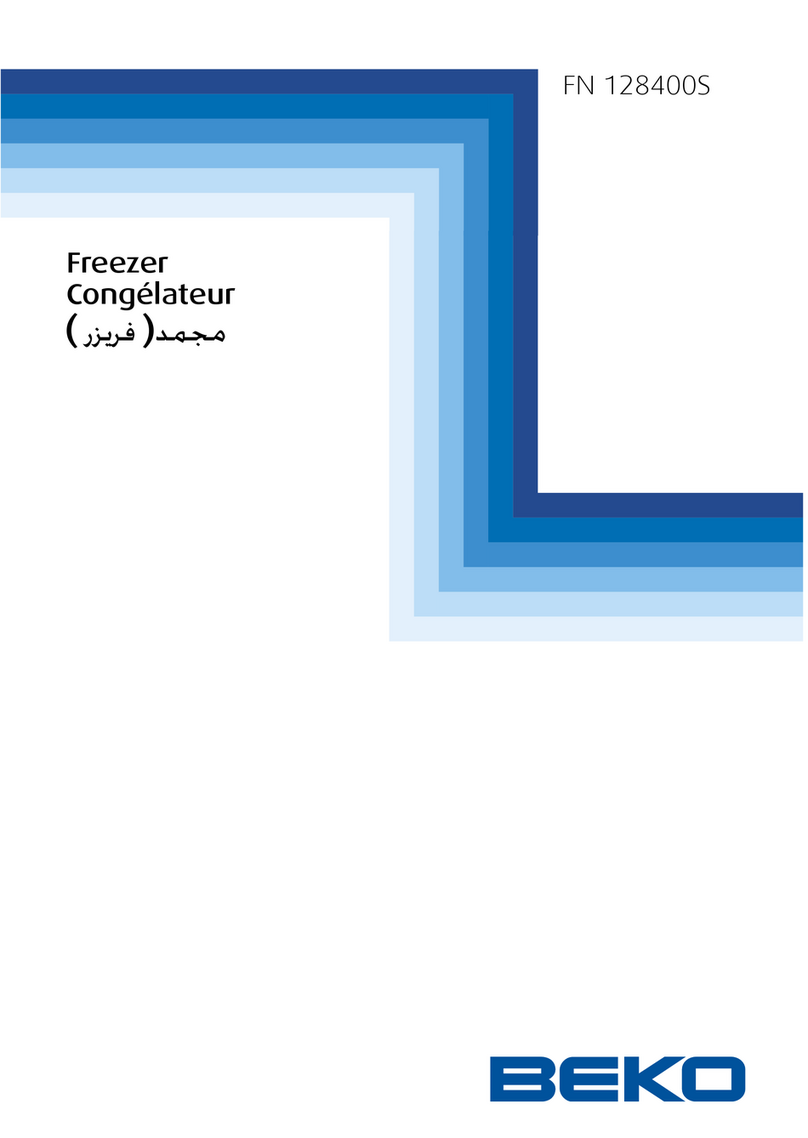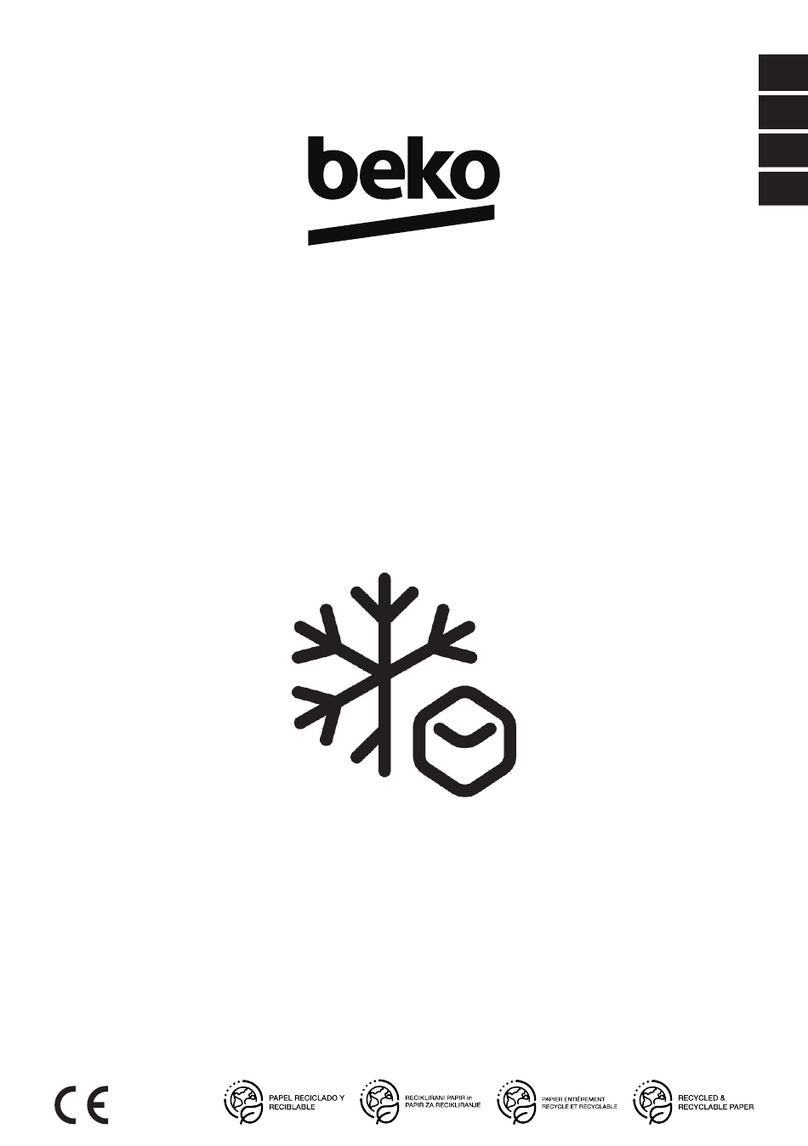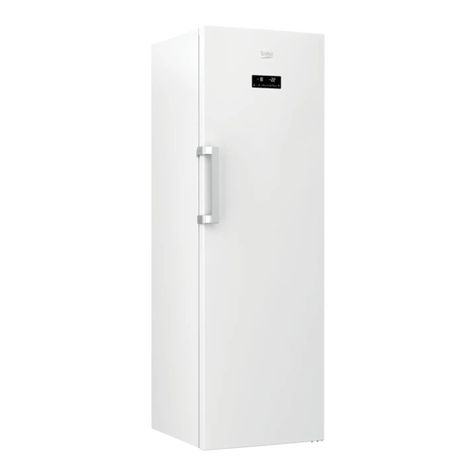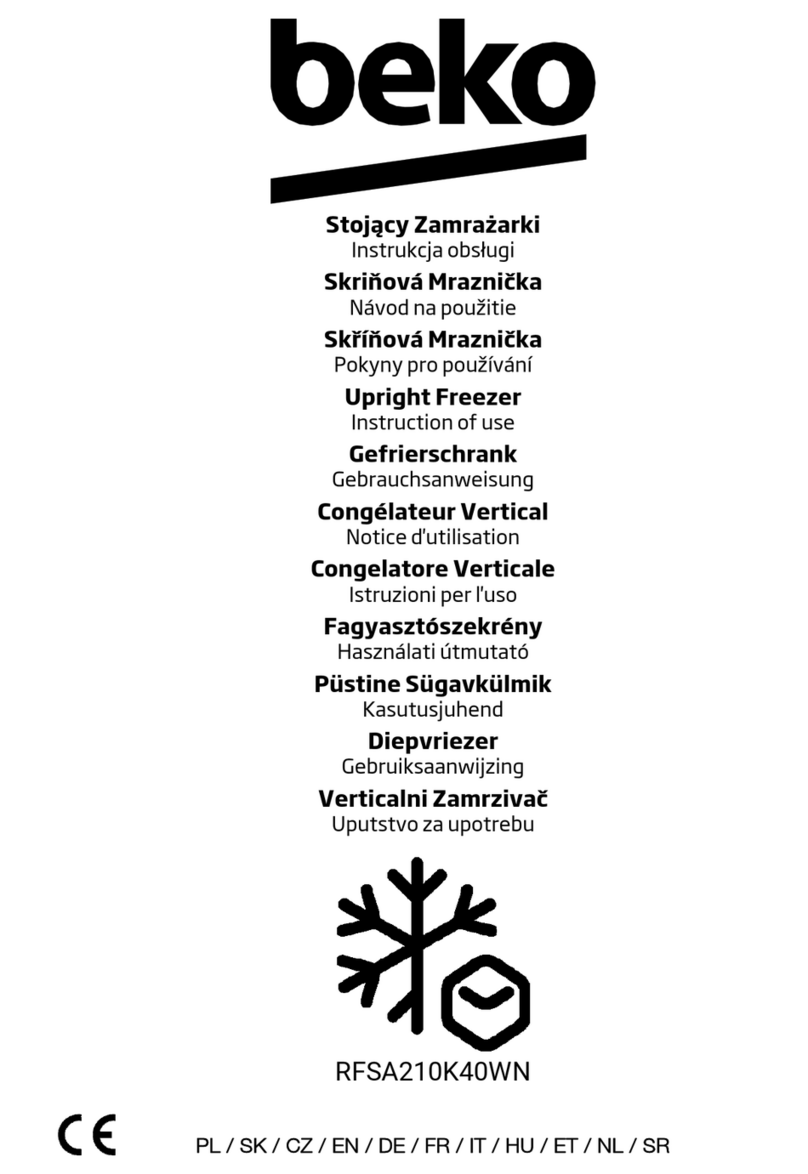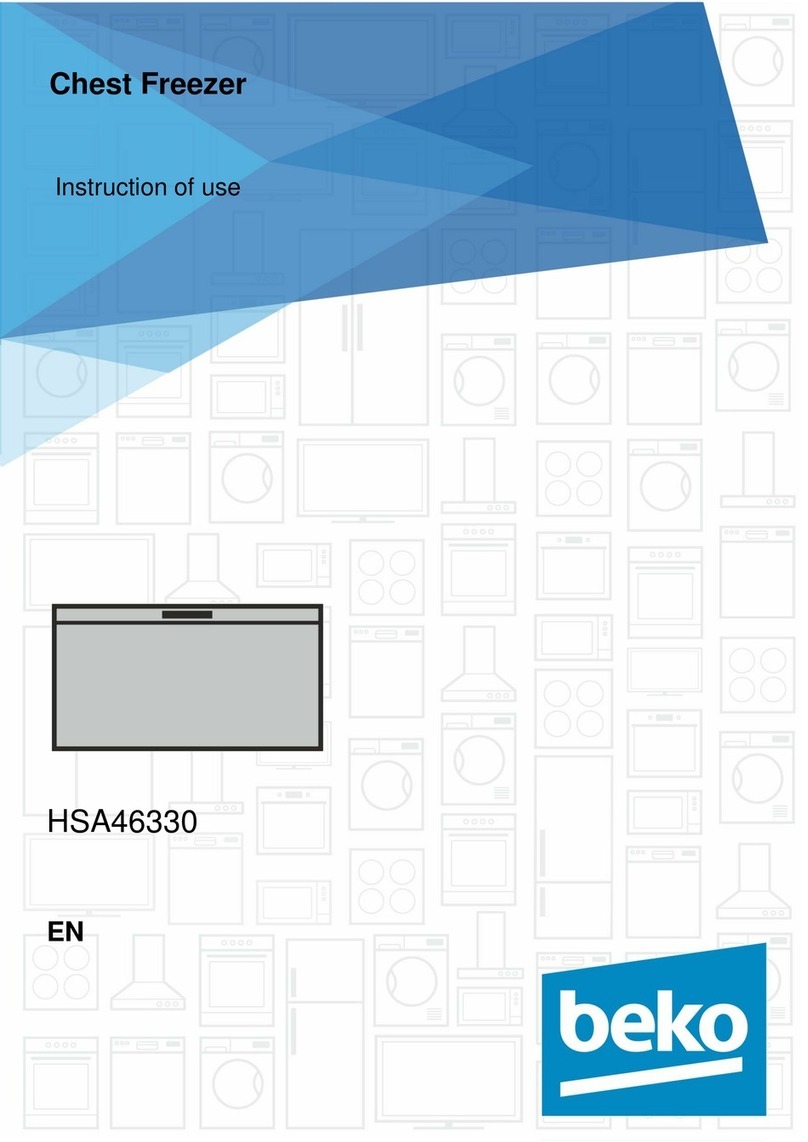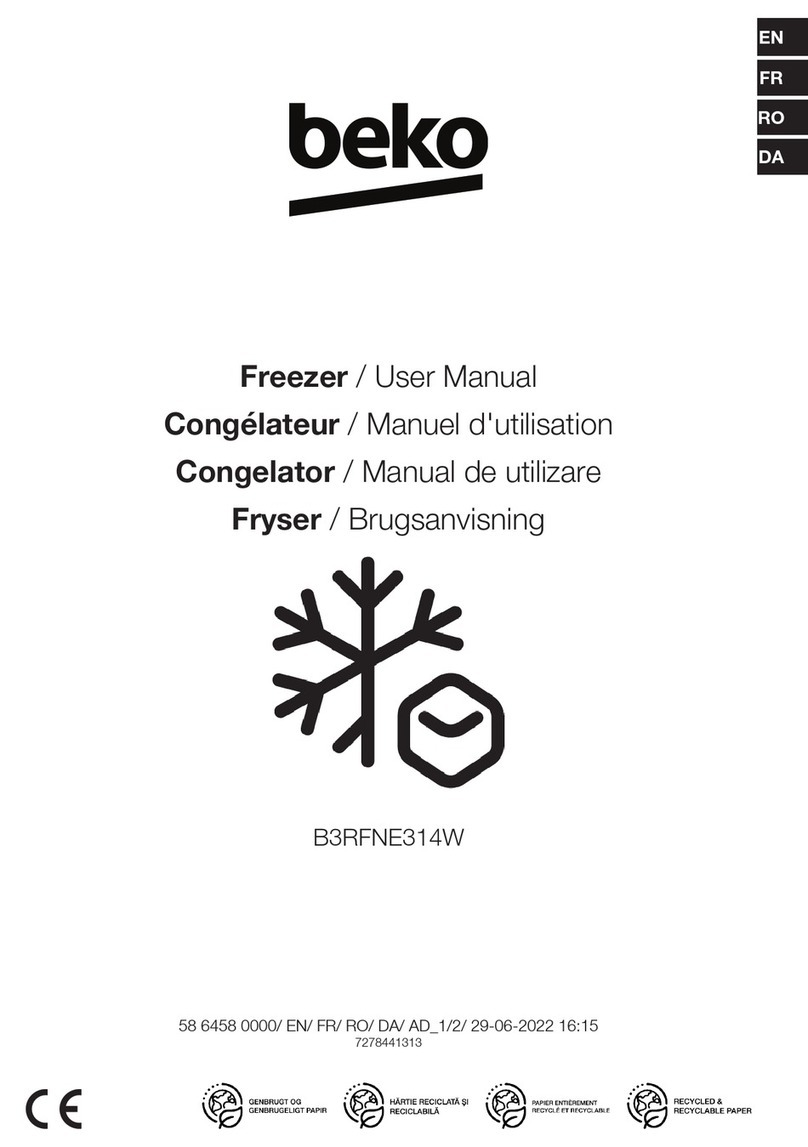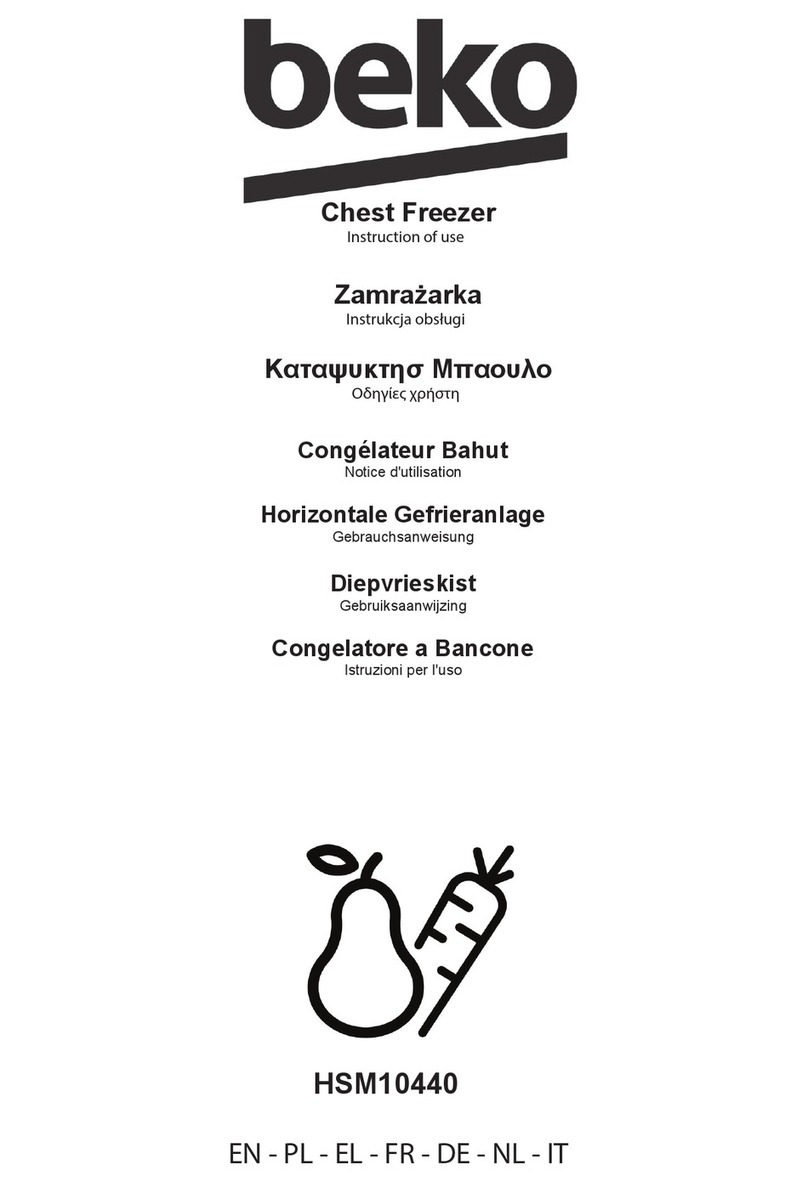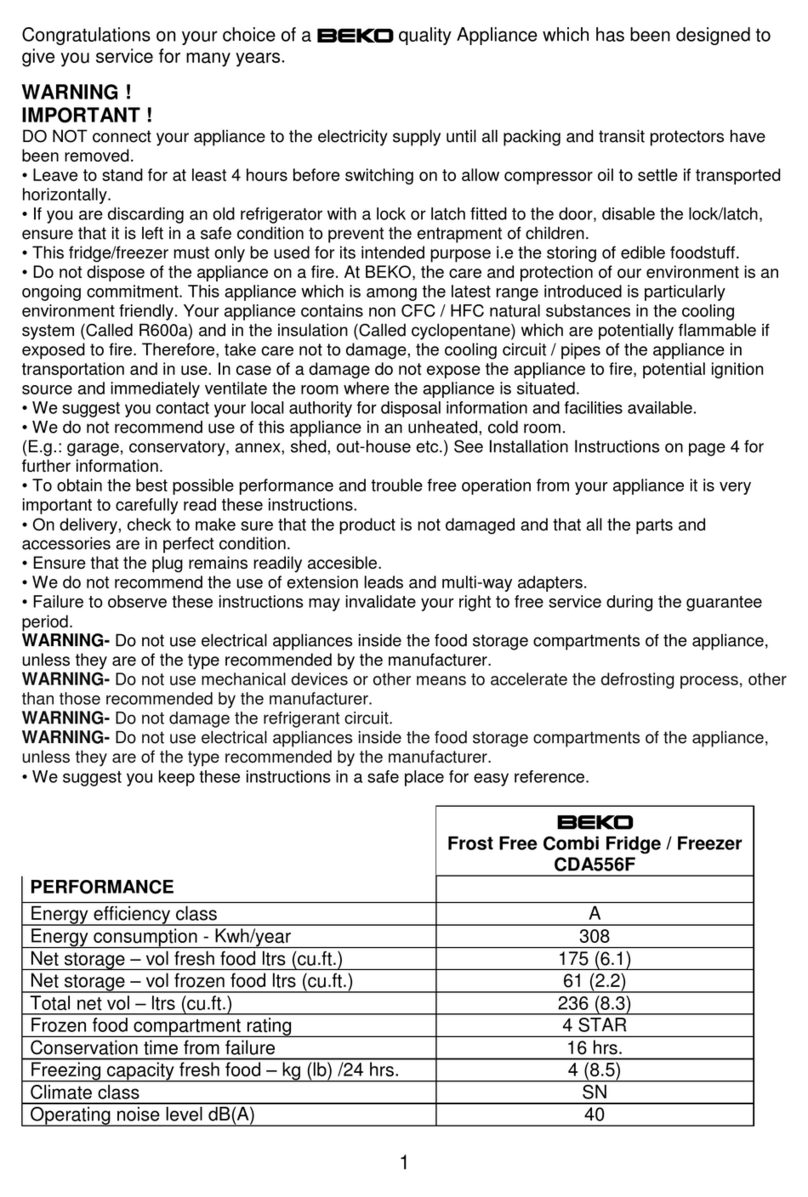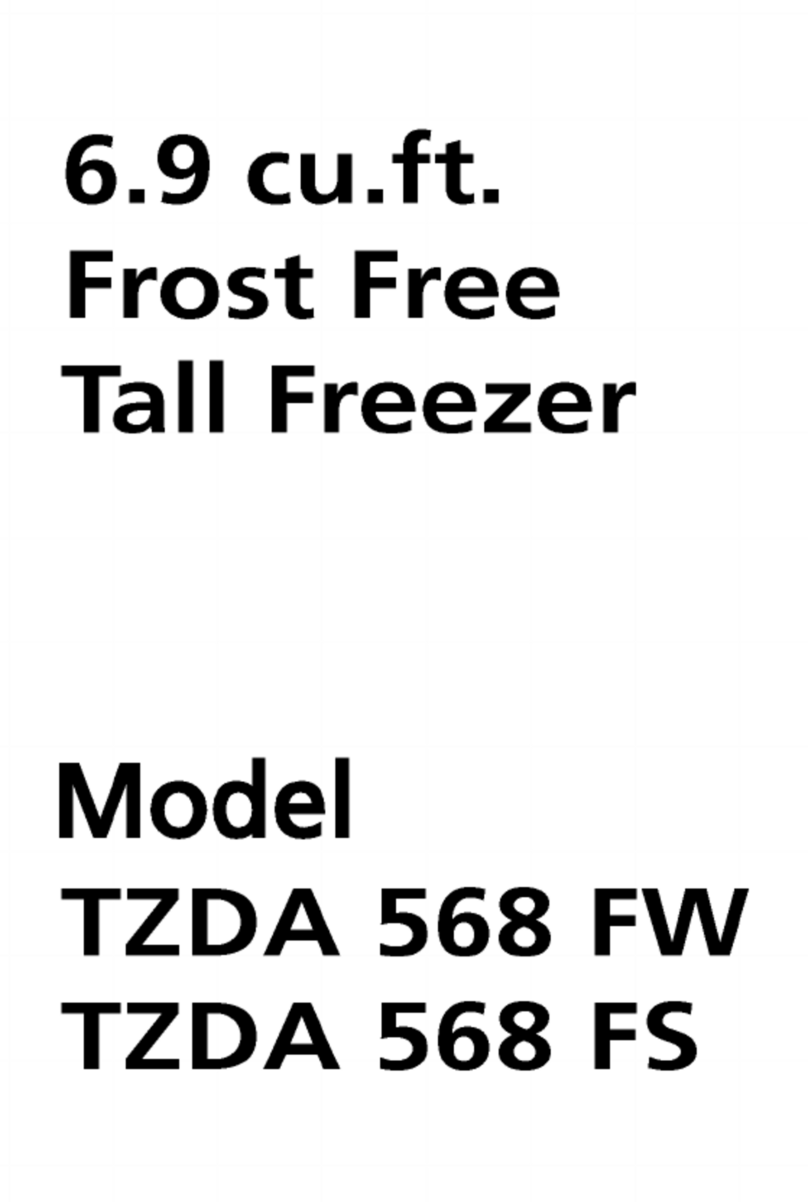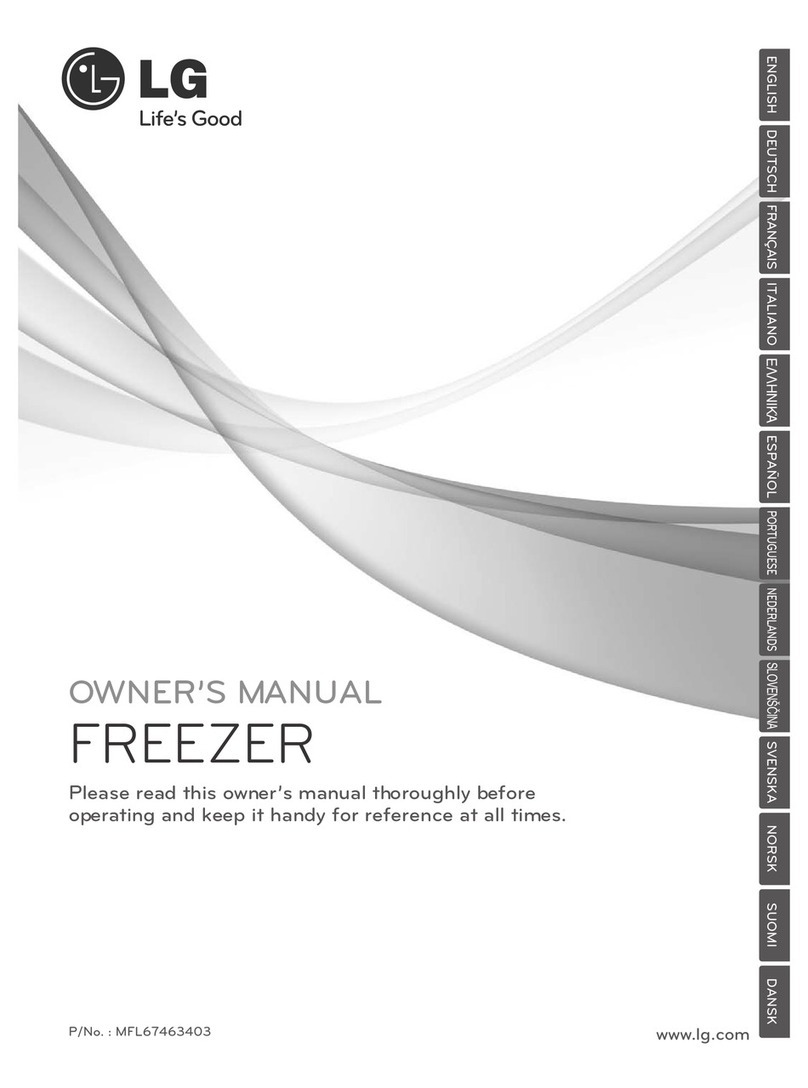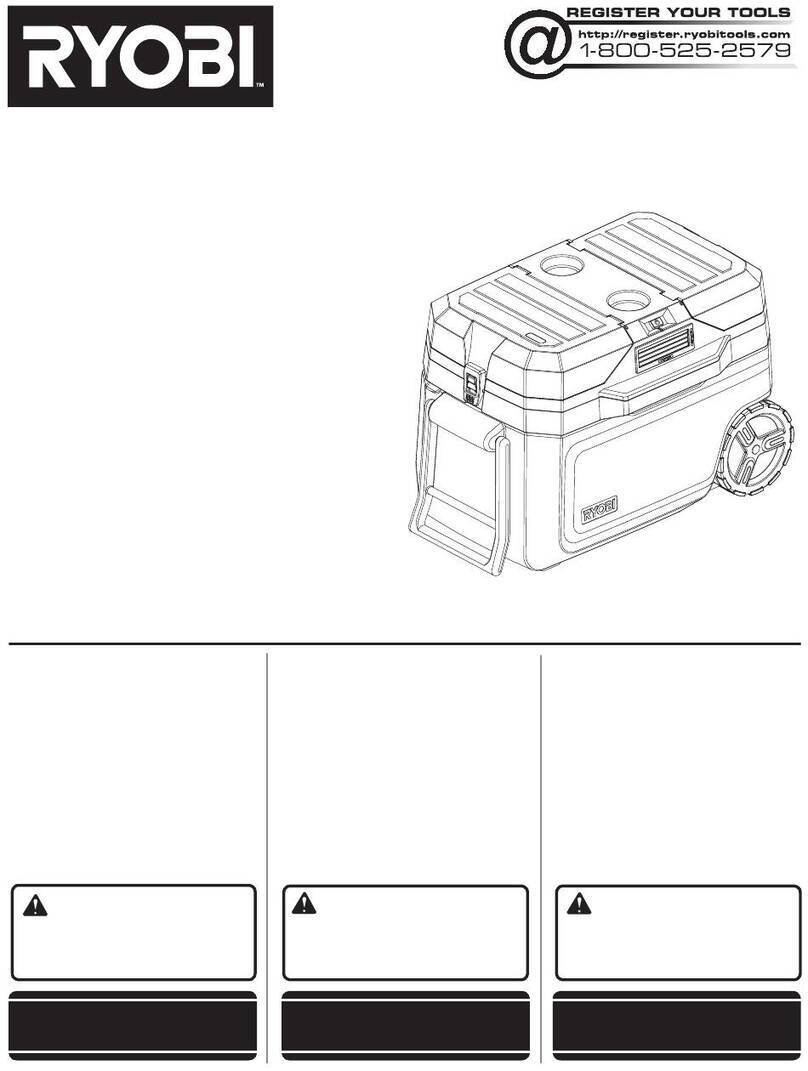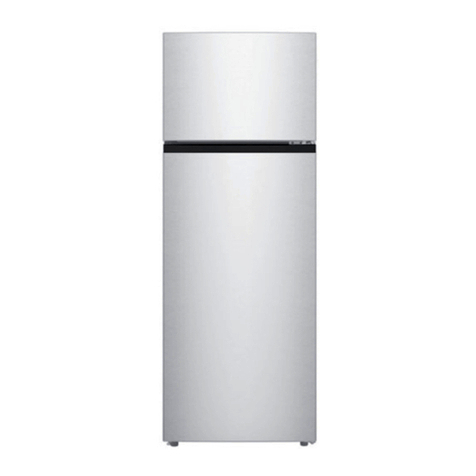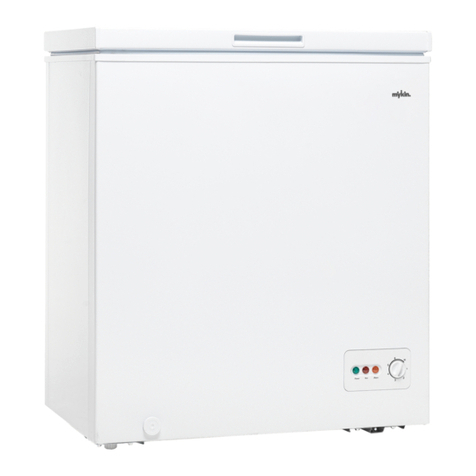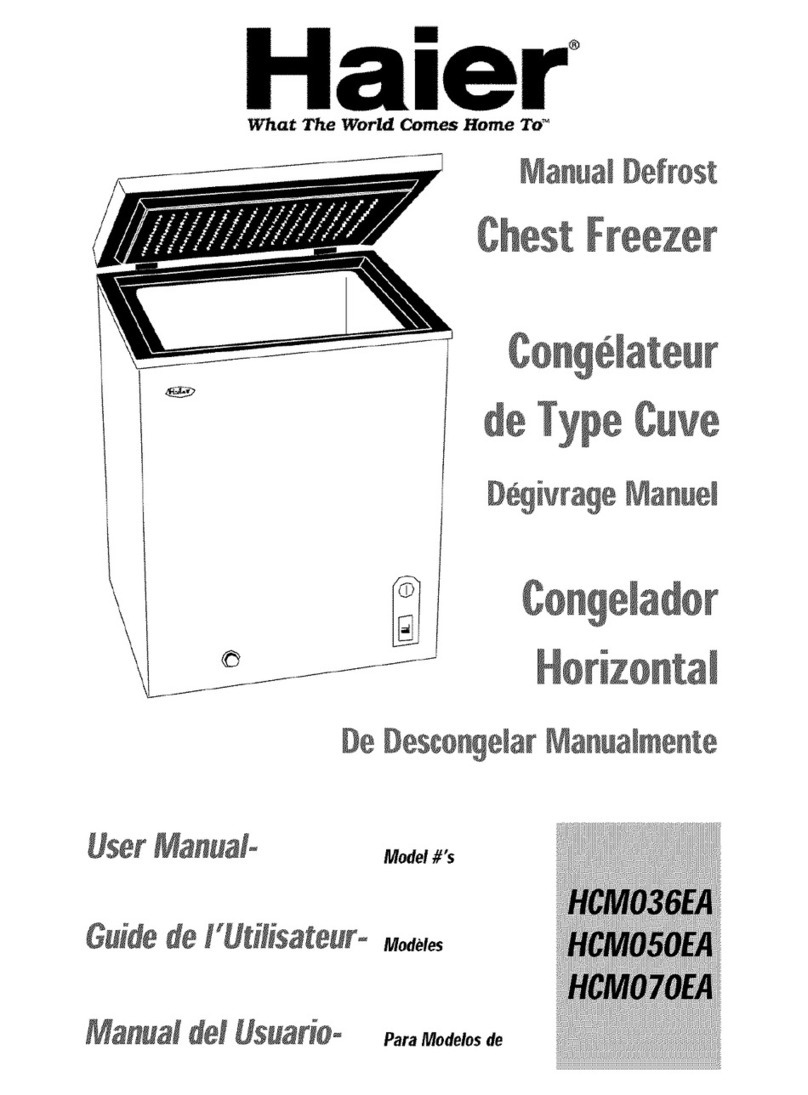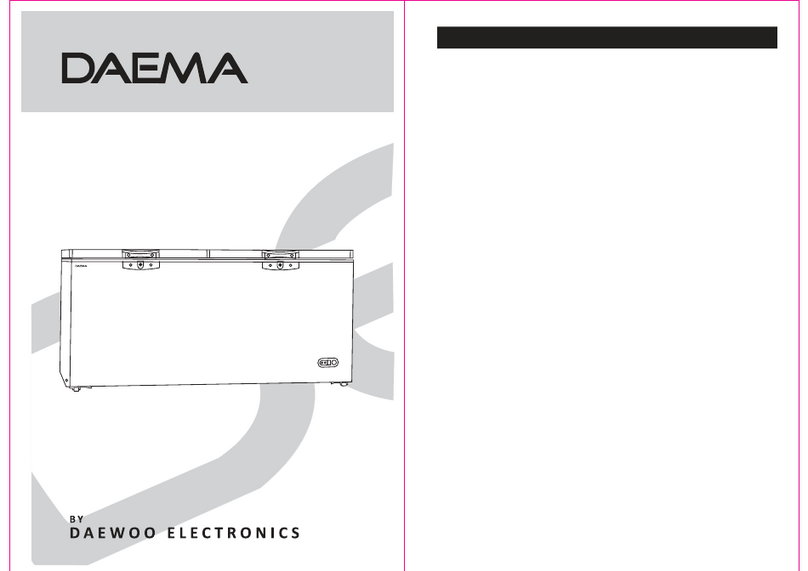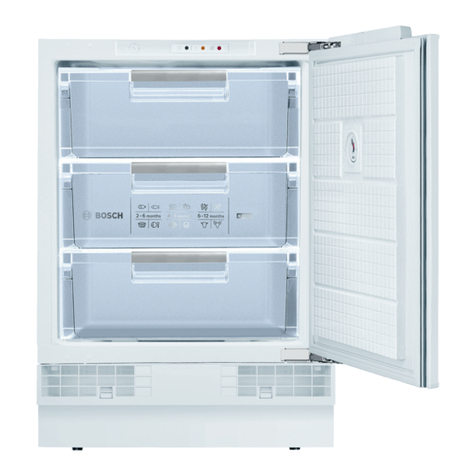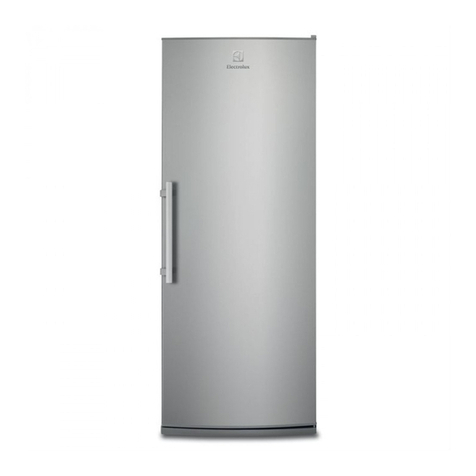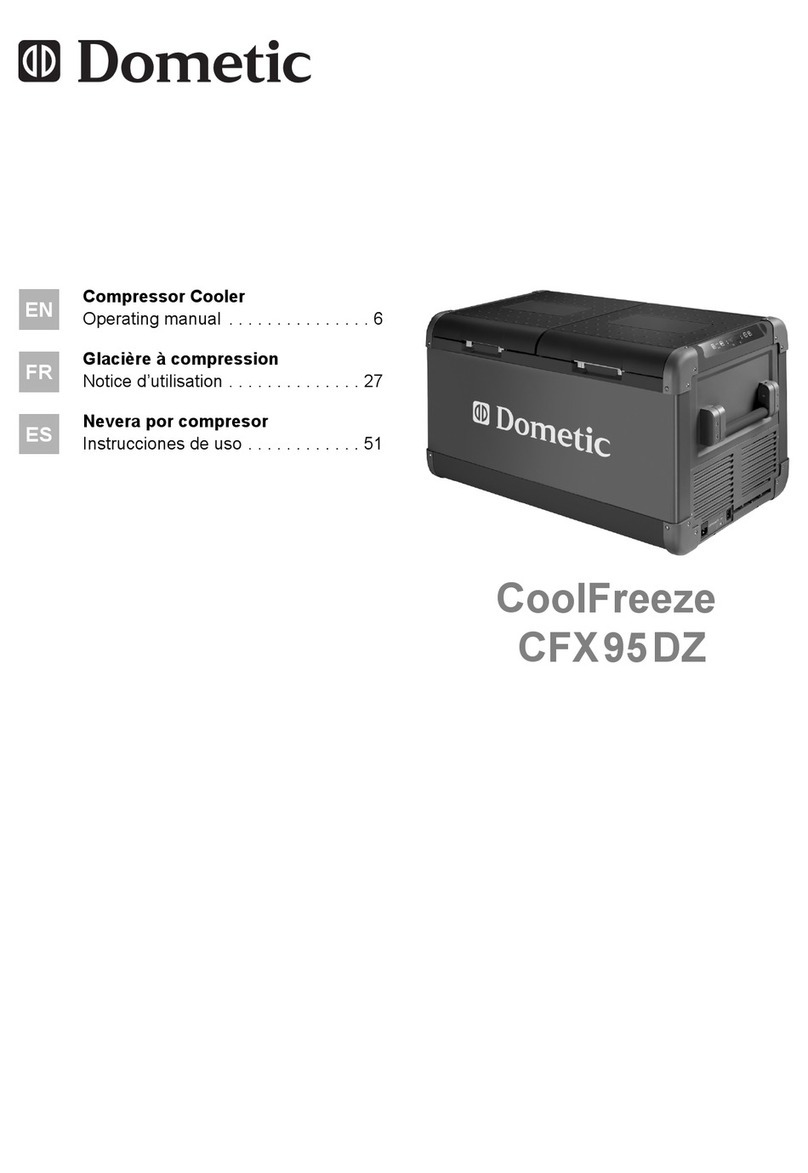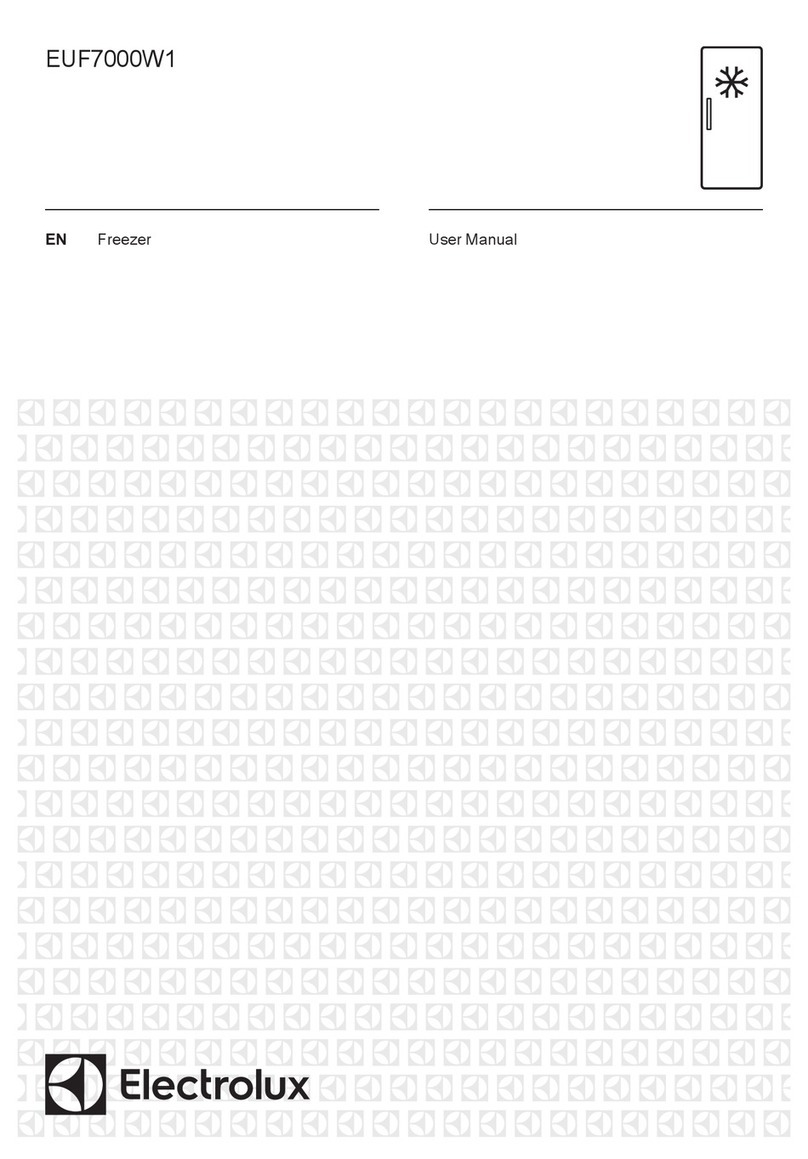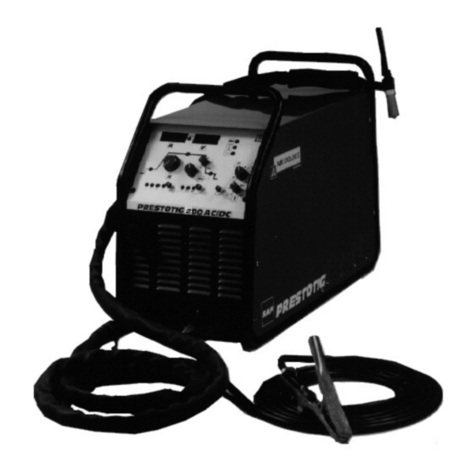
EN
6
• Do not touch frozen food by
hand; they may stick to your
hand.
• Unplug your refrigerator before
cleaning or defrosting.
• Vapor and vaporized cleaning
materials should never be
used in cleaning and defrosting
processes of your refrigerator.
In such cases, the vapor may
get in contact with the electrical
parts and cause short circuit or
electric shock.
• Never use the parts on your
refrigerator such as the door as
a means of support or step.
• Do not use electrical devices
inside the refrigerator.
• Do not damage the parts,
where the refrigerant is
circulating, with drilling or
cutting tools. The refrigerant
that might blow out when the
gas channels of the evaporator,
pipe extensions or surface
coatings are punctured causes
skin irritations and eye injuries.
• Do not cover or block the
ventilation holes on your
refrigerator with any material.
• Electrical devices must be
repaired by only authorised
persons. Repairs performed by
incompetent persons create a
risk for the user.
• In case of any failure or during
a maintenance or repair work,
disconnect your refrigerator’s
mains supply by either
turning off the relevant fuse or
unplugging your appliance.
• Do not pull by the cable when
pulling off the plug.
• Ensure highly alcoholic
beverages are stored securely
with the lid fastened and
placed upright.
• Never store spray cans
containing flammable and
explosive substances in the
refrigerator.
• Do not use mechanical devices
or other means to accelerate
the defrosting process, other
than those recommended by
the manufacturer.
• This product is not intended
to be used by persons with
physical, sensory or mental
disorders or unlearned or
inexperienced people (including
children) unless they are
attended by a person who
will be responsible for their
safety or who will instruct them
accordingly for use of the
product
• Do not operate a damaged
refrigerator. Consult with the
service agent if you have any
concerns.
• Electrical safety of your
refrigerator shall be guaranteed
only if the earth system in
your house complies with
standards.
• Exposing the product to
rain, snow, sun and wind is
dangerous with respect to
electrical safety.
• Contact authorized service
when there is a power cable
damage to avoid danger.
• Never plug the refrigerator
into the wall outlet during
installation. Otherwise, risk of
death or serious injury may
arise.
